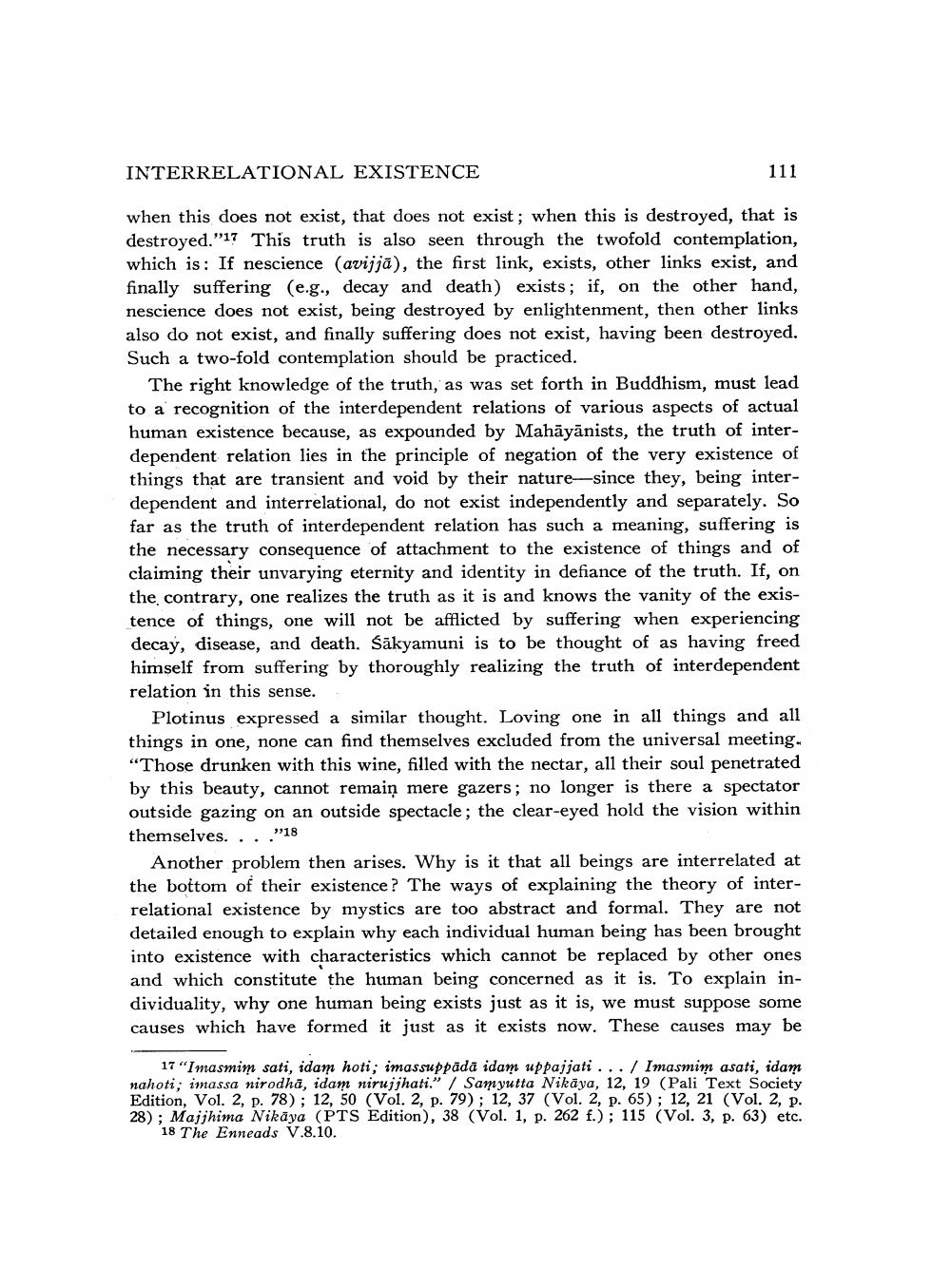________________
INTERRELATIONAL EXISTENCE
111
when this does not exist, that does not exist; when this is destroyed, that is destroyed."1? This truth is also seen through the twofold contemplation, which is: If nescience (avijjā), the first link, exists, other links exist, and finally suffering (e.g., decay and death) exists; if, on the other hand, nescience does not exist, being destroyed by enlightenment, then other links also do not exist, and finally suffering does not exist, having been destroyed. Such a two-fold contemplation should be practiced.
The right knowledge of the truth, as was set forth in Buddhism, must lead to a recognition of the interdependent relations of various aspects of actual human existence because, as expounded by Mahāyānists, the truth of interdependent relation lies in the principle of negation of the very existence of things that are transient and void by their nature—since they, being interdependent and interrelational, do not exist independently and separately. So far as the truth of interdependent relation has such a meaning, suffering is the necessary consequence of attachment to the existence of things and of claiming their unvarying eternity and identity in defiance of the truth. If, on the contrary, one realizes the truth as it is and knows the vanity of the existence of things, one will not be afflicted by suffering when experiencing decay, disease, and death. Sākyamuni is to be thought of as having freed himself from suffering by thoroughly realizing the truth of interdependent relation in this sense.
Plotinus expressed a similar thought. Loving one in all things and all things in one, none can find themselves excluded from the universal meeting. “Those drunken with this wine, filled with the nectar, all their soul penetrated by this beauty, cannot remaiņ mere gazers; no longer is there a spectator outside gazing on an outside spectacle; the clear-eyed hold the vision within themselves. . . ."18
Another problem then arises. Why is it that all beings are interrelated at the bottom of their existence? The ways of explaining the theory of interrelational existence by mystics are too abstract and formal. They are not detailed enough to explain why each individual human being has been brought into existence with characteristics which cannot be replaced by other ones and which constitute the human being concerned as it is. To explain individuality, why one human being exists just as it is, we must suppose some causes which have formed it just as it exists now. These causes may be
17 "Imasmim sati, idam hoti; imassuppādā idam uppajjati ... / Imasmim asati, idam nahoti, imassa nirodha, idam nirujjhati." / Samyutta Nikāya, 12, 19 (Pali Text Society Edition, Vol. 2, p. 78); 12, 50 (Vol. 2, p. 79); 12, 37 (Vol. 2, p. 65); 12, 21 (Vol. 2, p. 28); Majjhima Nikāya (PTS Edition), 38 (Vol. 1, p. 262 f.); 115 (Vol. 3, p. 63) etc.
18 The Enneads V.8.10.




